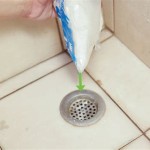The Art and Science of Rose Petals in the Bathtub
The practice of incorporating rose petals into a bath transcends mere aesthetics; it represents a confluence of historical ritual, aromatherapy, and skincare benefits. For centuries, cultures across the globe have revered roses for their beauty and fragrance, integrating them into various aspects of life, from culinary arts to medicinal applications. The use of rose petals in a bath is a direct extension of this reverence, offering a sensory experience that appeals to both the mind and body.
This article aims to explore the multifaceted aspects of utilizing rose petals in a bathtub. It will delve into the historical context, examine the potential benefits, and provide practical guidance on how to prepare and enjoy a rose petal bath safely and effectively. The information presented seeks to provide a comprehensive understanding of this practice, allowing individuals to make informed decisions about incorporating it into their self-care routines.
Historical and Cultural Significance
The history of rose petals in bathing dates back to ancient civilizations. In ancient Rome, elaborate bathhouses were commonplace, and roses, symbols of luxury and opulence, frequently adorned these spaces. Rose-infused oils and rosewater were often used to cleanse and perfume the body, while rose petals were scattered across the surface of the water, creating a visually stunning and aromatically pleasing environment. This practice was not limited to personal hygiene; it was also a social activity, with individuals gathering to relax and socialize in the fragrant waters.
Similarly, in ancient Egypt, roses held significant religious and cultural importance. They were associated with the goddess Isis and were used in funerary rituals and as offerings to the gods. Cleopatra, renowned for her beauty and grace, is often depicted as using rose petals in her baths to maintain her skin's radiance and to create an atmosphere of luxury and sensuality. The use of roses, therefore, extended beyond mere aesthetics; it was intertwined with religious beliefs and social status.
The tradition of using roses in bathing continued throughout the Middle Ages and Renaissance. Herbalists and apothecaries recognized the potential medicinal properties of roses, using them to treat various ailments. Rosewater, derived from rose petals, was prized for its soothing and anti-inflammatory properties and was often incorporated into skincare formulations. The symbolic association of roses with love, beauty, and purity further solidified their place in bathing rituals.
In various Asian cultures, particularly in India and the Middle East, roses have long been used in Ayurvedic and traditional medicine. Rosewater is a common ingredient in skincare products and is believed to possess cooling and calming properties. Rose petals are also used in aromatherapy to promote relaxation and reduce stress. The use of rose petals in baths, therefore, represents a continuation of these ancient practices, passed down through generations.
Potential Benefits of Rose Petal Baths
Beyond the aesthetic appeal, rose petal baths are believed to offer several potential benefits for both the skin and the mind. These benefits stem from the chemical composition of rose petals, which includes volatile oils, antioxidants, and vitamins. While scientific research on the specific effects of rose petal baths is limited, anecdotal evidence and studies on the individual components of roses suggest a range of potential advantages.
One of the primary benefits attributed to rose petal baths is their potential to hydrate and moisturize the skin. Rose petals contain natural oils that can help to lock in moisture, leaving the skin feeling soft and supple. This is particularly beneficial for individuals with dry or sensitive skin, as the oils can help to alleviate dryness and irritation. The gentle cleansing properties of rosewater can also help to remove impurities without stripping the skin of its natural oils.
Rose petals are rich in antioxidants, which can help to protect the skin from damage caused by free radicals. Free radicals are unstable molecules that contribute to premature aging, wrinkles, and other skin problems. By neutralizing free radicals, antioxidants can help to maintain the skin's elasticity and youthful appearance. The antioxidants in rose petals, such as vitamin C, can also help to brighten the skin and even out skin tone.
The aroma of roses is widely recognized for its calming and mood-boosting effects. Inhaling the scent of roses can help to reduce stress, anxiety, and depression. The volatile oils in rose petals stimulate the limbic system, the part of the brain responsible for emotions and memory. This can lead to feelings of relaxation, happiness, and well-being. The soothing aroma of a rose petal bath can therefore create a tranquil and restorative experience, promoting both physical and mental relaxation.
Furthermore, some believe that rose petal baths possess anti-inflammatory properties. The compounds in rose petals can help to reduce inflammation and redness associated with skin conditions such as eczema and psoriasis. Rosewater, in particular, is often used to soothe irritated skin and to relieve minor skin irritations. While more research is needed to confirm these effects, the anecdotal evidence suggests that rose petal baths can provide relief for individuals with inflammatory skin conditions.
It is important to note that the potential benefits of rose petal baths may vary depending on the individual's skin type, sensitivity, and overall health. It is always advisable to perform a patch test before immersing oneself in a full rose petal bath, especially if one has a history of allergies or sensitive skin. Consulting a dermatologist or healthcare professional is recommended for individuals with pre-existing skin conditions or concerns.
Preparing and Enjoying a Rose Petal Bath Safely
Preparing a rose petal bath is a relatively simple process, but it requires careful attention to detail to ensure a safe and enjoyable experience. The choice of roses, the water temperature, and the addition of other ingredients can all influence the overall outcome. Following these guidelines will help to maximize the benefits and minimize any potential risks.
The first step is to select high-quality roses. Ideally, one should opt for organic roses that have not been treated with pesticides or other harmful chemicals. This is especially important if one is planning to use the rose petals for culinary purposes or if one has sensitive skin. If organic roses are not available, thoroughly rinse the petals under running water to remove any residual chemicals. The color of the roses is largely a matter of personal preference, but different varieties may have slightly different scents and properties. Red roses are often associated with love and romance, while pink roses symbolize gratitude and appreciation. White roses represent purity and innocence, while yellow roses signify friendship and caring.
Once the roses have been selected and prepared, the next step is to prepare the bathwater. The water temperature should be warm, but not too hot. Excessively hot water can dry out the skin and cause discomfort. Aim for a temperature that is comfortable and relaxing. As the bathtub fills with water, gently scatter the rose petals across the surface. The number of petals to use is a matter of personal preference, but a generous handful is generally sufficient to create a visually appealing and aromatically pleasing bath. Some individuals prefer to use only the petals, while others may choose to include the entire rose head, including the stem and leaves. This is largely a matter of personal preference, but it is important to remove any thorns to avoid injury.
To enhance the benefits of the rose petal bath, one can add other ingredients such as essential oils, Epsom salts, or milk. Essential oils such as lavender, chamomile, or sandalwood can complement the calming aroma of roses and promote relaxation. Epsom salts can help to soothe sore muscles and reduce inflammation. Milk, particularly goat's milk or coconut milk, can help to moisturize and soften the skin. When adding essential oils, it is important to use them sparingly, as they can be irritating to the skin if used in high concentrations. A few drops of essential oil added to a carrier oil, such as almond oil or jojoba oil, can be added to the bathwater. For Epsom salts and milk, follow the instructions on the packaging for the recommended amount to use.
Before immersing oneself in the rose petal bath, it is important to ensure that the bathroom is well-ventilated and that the lighting is dim and relaxing. Soft music or aromatherapy candles can further enhance the ambiance. Once in the bath, take deep breaths and allow the aroma of roses to calm the mind and relax the body. Gently massage the skin with the rose petals to further stimulate circulation and promote absorption of the beneficial compounds. It is recommended to soak in the rose petal bath for at least 20-30 minutes to allow the skin to fully absorb the moisture and nutrients. Avoid using harsh soaps or detergents during the bath, as these can strip the skin of its natural oils.
After the bath, gently pat the skin dry with a soft towel. Avoid rubbing the skin, as this can cause irritation. Apply a moisturizer, such as rosehip oil or shea butter, to further hydrate and protect the skin. Drink plenty of water to replenish fluids lost during the bath. It is also important to clean the bathtub thoroughly after each use to prevent the buildup of bacteria and mold. Remove any remaining rose petals and rinse the bathtub with warm water and a mild cleanser.
Considerations and Precautions
While rose petal baths are generally considered safe, there are certain considerations and precautions to keep in mind to minimize the risk of adverse reactions. Individuals with allergies to roses or other plants should avoid using rose petals in their bathwater. It is always advisable to perform a patch test before immersing oneself in a full rose petal bath to check for any allergic reactions. Apply a small amount of rosewater or crushed rose petals to a small area of skin and wait for 24 hours to see if any redness, itching, or irritation develops.
Pregnant women and breastfeeding mothers should consult their healthcare provider before using rose petal baths, as some essential oils and other ingredients may not be safe for them. Individuals with certain medical conditions, such as heart problems or high blood pressure, should also consult their doctor before taking a rose petal bath, as the warm water can affect blood pressure and circulation.
It is important to use caution when getting in and out of the bathtub, as the rose petals can make the surface slippery. Consider placing a non-slip mat in the bathtub to prevent falls. Avoid using electric devices, such as hair dryers or mobile phones, near the bathtub to prevent electric shock. Never leave a child unattended in the bathtub, even for a moment.
The disposal of rose petals after the bath should be done responsibly. Avoid flushing the petals down the toilet, as they can clog the pipes. Instead, compost the rose petals or dispose of them in the trash. If using essential oils, be sure to dispose of the empty bottles properly, following the instructions on the packaging.
By following these considerations and precautions, one can safely enjoy the numerous benefits of rose petal baths and create a truly luxurious and restorative experience.

Bathtub Rose Petals Images Browse 23 151 Stock Photos Vectors And Adobe

Bathtub Rose Petals Images Browse 23 151 Stock Photos Vectors And Adobe

Rose Bath Lv Wedding Connection

Bathtub With Rose Petals Ariesdragoon Lindaland Petal Bath Candle

Bathtub Rose Petals Images Browse 23 151 Stock Photos Vectors And Adobe

Bathtub With Rose Petals Picture Of Resorts World Sentosa Equarius Hotel Island Tripadvisor

15 Flower S To Make Your Home More Beautiful Petals Bath Rose

Romance 4000 Red Rose Petals Silk Petal Garden Inc

Bath Water With Rose Petals Stock Photo By Senkaya 30693339

Close Up Heart Shaped Flower Petals In Bath Tub Two Cups Of 47 Off








